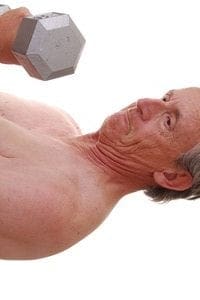statFor some women, it's about making an elegantement at special events or being a couple…

How to Improve Your Bone Health at Any Age
 Childhood is the ideal time to build strong bones. However, there are always things you can do—even as an adult—to help keep your bones healthy. And it’s particularly important to do these things as you age.
Childhood is the ideal time to build strong bones. However, there are always things you can do—even as an adult—to help keep your bones healthy. And it’s particularly important to do these things as you age.
Our bones are in a constant state of being broken down and rebuilt. Until the age of about 30, bone buildup exceeds bone loss. Then bone density slowly begins to decline. If you’re a woman, the reduction in estrogen that comes with menopause can accelerate this bone loss, sometimes dramatically. But no matter how old you are, there are four simple things to keep in mind if you’re interested in maintaining higher levels of bone density into older age: calcium, vitamin K, vitamin D and exercise. Let’s look at how these four are related.
Calcium is integral to maintaining bone strength. However, the number one source of calcium is not what most people believe it is. Dark green leafy vegetables are the single best source of this mineral. Ounce for ounce, they’re even better than dairy products (which are also good). So the key to feeding your bones is to incorporate more spinach, collard greens, broccoli and bok choy into your diet in addition to dairy (milk, yogurt and cheese). Tofu is often fortified with calcium as well, so a quick stir-fry including tofu, bok choy and sesame seeds (another great source of calcium) makes an excellent bone-healthy meal.
In addition to being a great source of calcium, dark green leafy vegetables are also high in vitamin K, a vitamin key to the production of osteocalcin, a bone protein. Vitamin K is needed to bind calcium to the bones and reduces the amount of calcium that is excreted in the urine. It has been shown to promote higher bone density and reduce the risk of fractures. For maintaining bone health, the best supplement to take is a form of vitamin K2 called MK-7 (menaquinone).
In order for your bones to make the most of all that calcium, you also need an adequate supply of vitamin D, which is critical to calcium absorption. However, vitamin D deficiency can be very common in people who live far from the equator and may not benefit from much sunlight during certain times of the year. Dr. Michael Holick, a leading vitamin D expert, believes that most Americans do not get nearly enough it. “We want everyone to be above 30 nanograms per milliliter,” Holick says, “but currently in the United States, Caucasians average 18 to 22 nanograms and African-Americans average 13 to 15 nanograms.”
Most vitamin D is produced from our skin’s exposure to the sun. But even when the sun is shining strongly in the summer months, we are still unlikely to get sufficient exposure. Many people sit in an office all day and rarely get outside. When they do, they are admonished to cover themselves with sunscreen. Sunscreen is good at helping to prevent UV damage, but it is those same UV rays that spur vitamin D production. Experts advise that you get outdoors in the summer months with minimal clothing and no sunscreen two to three times a week for 5 or 10 minutes between the hours of 10 a.m. and 3 p.m.
Equally important in maintaining bone density is performing sufficient amounts of weight-bearing exercise. Even if you get adequate amounts of the necessary vitamins, you will still lose bone mass if you become a couch potato. As your muscles and bones work against gravity, it stimulates bone formation and lowers the rate of calcium loss. You can help to increase bone density at any age by practicing weight-bearing exercise for 20 to 30 minutes three times a week. This can include activities such as lifting weights, walking or running, dancing, playing tennis, climbing stairs or jumping rope.
With just a little extra attention to your diet and some regular exercise, you can significantly reduce your risk of osteoporosis and bone fractures and maintain good bone density into old age.




